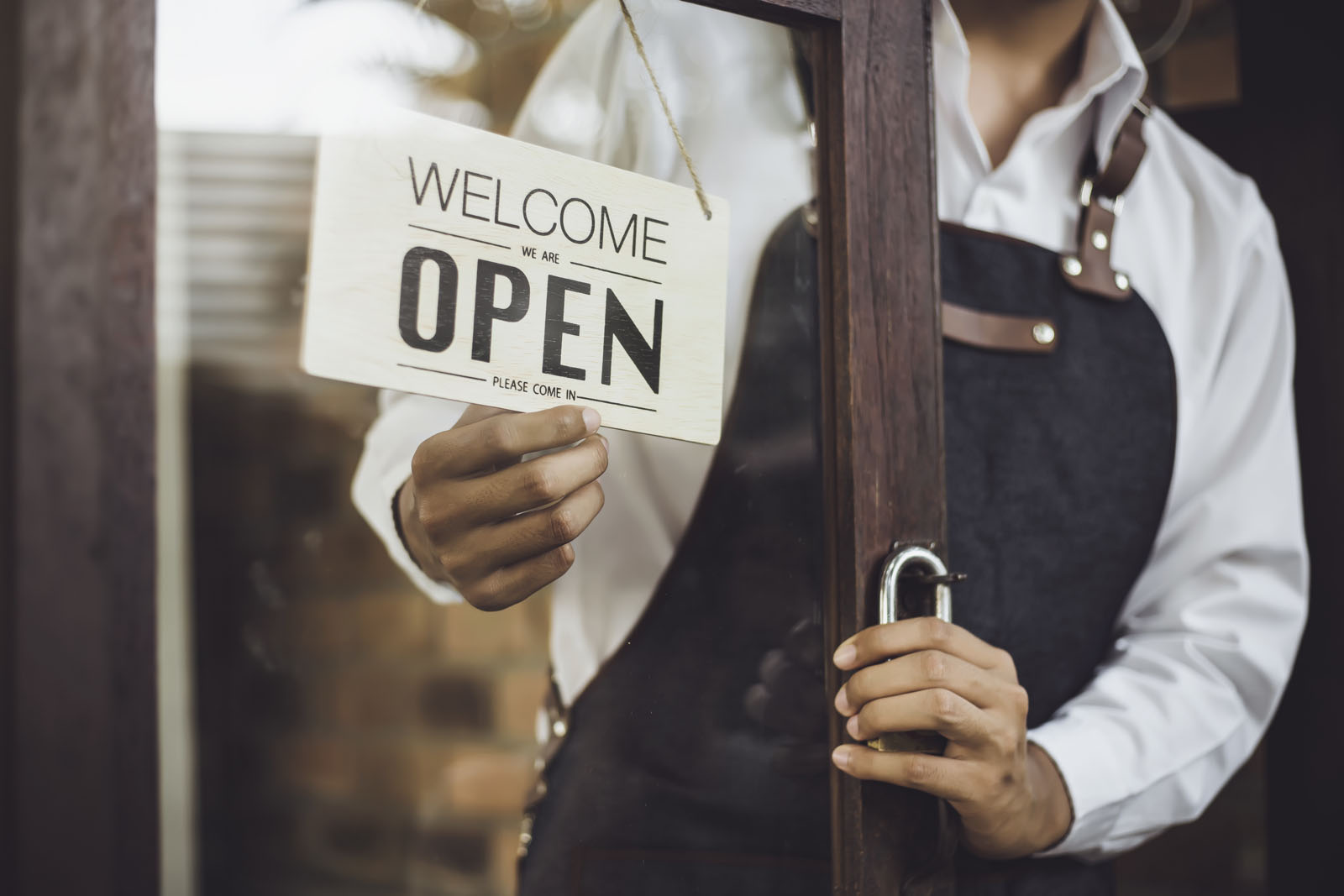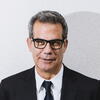
As the dreaded coronavirus rips across the globe, city after city has locked down, transforming urban business centers, suburban malls, and other public spaces into ghost towns. This is not the first time this has happened—since time immemorial, cities have been epicenters of communicable diseases.
No pandemic or plague or natural disaster has killed off “the city,” or humanity’s need to live and work in urban clusters. Not the Black Plagues of the 14th Century, or London’s cholera epidemic in the 1850s, or even 1918’s Spanish Flu, which killed tens of millions of people worldwide. That’s because cities’ concentration of people and economic activity—which serves as the motor force for innovation and economic growth—is just too strong.
We will get through this pandemic, too. We will go back to work and school and gather in restaurants and theaters and sports stadiums again. But when we do, cities and their leaders should not simply return to business as usual. Not only does COVID-19 threaten to reappear in subsequent waves if we do not remain vigilant, but there will always be future pandemics to brace against as well.
Our mayors, governors, and community leaders must do whatever is necessary to get their cities back up and running as soon as they safely can. After, we will need plans in place to prepare for future pandemics, and any social or economic lockdowns they necessitate. The federal government must do its part too, with bold and unprecedented programs to bolster the economic situation of our states and cities as well as our workers and business, especially small business.
Getting this response right may be as important as what we are doing today. We have written a 10-point plan based on detailed tracking of the current pandemic and historical accounts of previous ones, presenting some key measures to prepare our cities, economy, and workers for the next phase of the coronavirus crisis and beyond.
Pandemic-Proof Airports
Airports are a critical engine of economic development—they cannot be idled indefinitely. We need to make sure they can get up and running again quickly, and that means mobilizing like we did in the wake of the 9/11 terrorist attacks by adding temperature checks and necessary health screenings to the security measures already in place. It also means reducing crowding: Simple things like stanchions or painted lines on floors can promote social distancing in waiting areas. Airports should have large quantities of masks and hand sanitizer available, and airlines will need to reduce their passenger counts and keep middle seats open during future health crises.
Prepare Large-Scale Civic Assets
Cities are also home to other forms of large-scale infrastructure: stadiums, arenas, convention centers, performing arts centers, etc. Because they bring together large groups of people, city leaders must pandemic-proof these assets as much as possible, too. Audience sizes may need to be reduced in theaters, with seats left open. Masks may need to be required and made available to patrons as needed, and temperature checks carried out. This will be critical for communities that are dependent on such attractions: A Brookings analysis shows that COVID-19’s economic downturn will hit tourism-driven cities such as Orlando and Las Vegas hardest.1 The sooner such large-scale civic infrastructure can be safely reopened, the faster our urban economies will be able to rebound in the aftermath of a pandemic.
Modify Vital Infrastructure
As we’ve seen during the first phase of the COVID-19 crisis, buses, subways, and trains need emergency infusions of cash to keep the systems solvent when ridership is low or nonexistent. When they are back in service, design changes in stations and seating will be needed to prevent the spread of infectious diseases. Streets may need some retrofits too; New York Governor Andrew Cuomo has called for pedestrianizing some New York City streets to promote social distancing during COVID-19.2 Some of these changes should be permanent. Cities need to expand and better protect their bike lanes too, while refining bike- and scooter-sharing programs for when public transit is compromised.
Ready Key Anchor Institutions
Medical centers, hospitals, and universities are on the front lines of the battle against COVID-19, and many are already overtaxed. With dormitories, dining halls, and large groups of people, they will be highly vulnerable to the secondary waves of contagion. How can we ensure that they can operate safely to carry out vital research during pandemics? Just as with other large-scale civic assets, classes in these institutions can be kept small, but institutions will need to retrofit dormitories and dining halls with temperature checks and ensure adequate social distancing so they can safely function.
Embrace Telework
We are in the midst of a massive experiment in remote work. Most people will eventually go back to their offices, but some workers and companies may find remote work to be more effective. Tulsa, Oklahoma, has leveraged this concept through its Tulsa Remote 3 initiative, which pays remote workers a small grant to relocate there while helping them forge community and civic connections. Cities can learn from one another about how to best support the growing cadre of remote workers and make them connected, engaged, and vital parts of their communities.
Ensure Main Street Survives
The restaurants, bars, specialty shops, hardware stores, and other mom-and-pop shops that create jobs and lend unique character to our cities are at severe economic risk right now. Some projections suggest that as many as 75 percent of them may not survive the current crisis. The loss of our Main Street businesses would be irreparable, and not just for the people whose livelihoods depend on them, but for cities and communities as a whole.
The places that have protected their Main Streets will have a decisive competitive advantage as we return to normalcy. Loan programs from government, foundations, and the private sector as well as support from small business and technical organizations will be essential for ensuring these businesses survive. Cities need to provide this type of assistance and advice to these vital small businesses so they can safely reopen and weather the storm of future lockdowns.
Protect the Arts and Creative Economy
The creative economy of art galleries, museums, theaters, and music venues—along with the artists, musicians, and actors who fuel them—is also at dire risk. Cities must partner with other levels of government, the private sector, and philanthropies to marshal the funding and expertise needed to keep their cultural scenes alive.
Once they are allowed to reopen, these places will also need to make interim and long-term changes in the way they operate. Cities should provide advice and assistance on necessary procedures—from temperature screenings, better spacing for social distancing, and other safety measures—for these venues to continue as part of the urban landscape.
Assess Leading Industries and Clusters
It’s not individual firms but clusters of industry and talent that drive economic development. Some of those clusters are at greater risk than others: Sectors such as transportation, travel and hospitality, and the creative arts will be hit the hardest, while e-commerce and distribution or advanced manufacturing for health care and food processing may grow. Cities and economic development organizations must assess the industries and clusters that are most vulnerable in their territory, evaluate the impacts future pandemics will have for their labor markets and communities, and plan to make their economies more resilient and robust. They should pull together cluster working groups of business and nonprofit representatives and local academics and experts to best assess the impact of the pandemic and pandemic-related response on key clusters and develop medium-range plans.
Upgrade Jobs for Front-Line Service Workers
Nearly half of Americans work in low-wage service jobs.4 A considerable percentage of them—emergency responders, health care aides, office and hospital cleaners, grocery store clerks, warehouse workers, delivery people—are on the front lines of the pandemic. They need better protection, higher pay, and more benefits. States such as Vermont and Minnesota have paved the way by designating grocery store employees as emergency workers, making them eligible for benefits including free child care. Having a well-paid cadre of front-line service workers who can keep our communities safe and functional will help protect us from future waves of this pandemic and others that may follow.
Protect Less-Advantaged Communities
The economic fallout of pandemics will hurt most for the least-advantaged neighborhoods and their residents, who lack adequate health coverage and access to medical care, and who are the most vulnerable to job losses. This, too, is a fundamental issue of both safety and equity. Concentrated poverty, economic inequality, and racial and economic segregation are not only morally unjust—they also provide fertile ground for pandemics to take root and spread. Economic inclusion and more equitable development are critical factors for the health, safety, and economic competitiveness of our places. Cities and local leaders can work with federal and state agencies, community development organizations, and local foundations to target needed funds, support services, and technical assistance to these areas.
There is light at the end of the tunnel. In the not-too-distant future, the pandemic will end and our cities will return to something approximating normal. What we do over the next 12 to 18 months can ensure that our city and metro economies get up and running again while protecting themselves against similar scenarios in the future. This is a time when our cities and their leaders can and must show the way forward.


ENDNOTES AND RESOURCES
This article was originally published on brookings.edu. Reprinted with permission.
New, Reduced Membership Dues
A new, reduced dues rate is available for CAOs/ACAOs, along with additional discounts for those in smaller communities, has been implemented. Learn more and be sure to join or renew today!
